#Karl Ernst Osthaus
Explore tagged Tumblr posts
Text

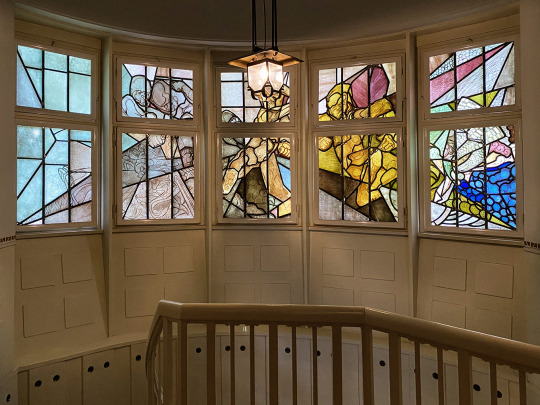
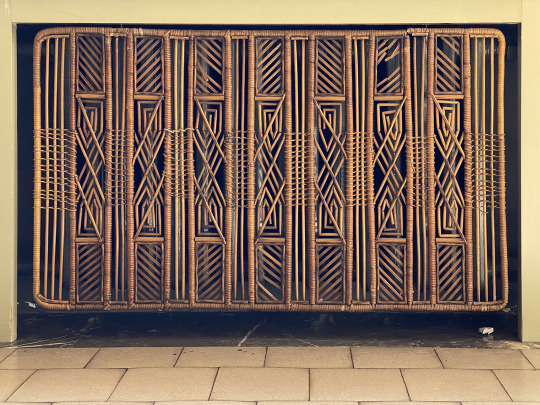
Hohenhof – interior · Hagen · 2023
#jugendstil#art nouveau#hagen#architecture#pattern#Henry van de Velde#Karl Ernst Osthaus#ruhr#ruhrpott
309 notes
·
View notes
Text

Ida Gerhadi, Portrait of Karl Ernst Osthaus, 1903.
Karl Ernst Osthaus (1874–1921), an important German patron of European avant-garde art, founded the Folkwang Museum at Hagen, Germany, in 1902. Following the second New Artists’ Association exhibition, Osthaus organized an even larger exhibition of Expressionist painting with works by Jawlensky and Kandinsky.
#Ida Gerhadi#painter#painting#Neo-Impressionism#Portrait of Karl Ernst Osthaus#1902#1900s#Karl Ernst Osthaus#German#patron of European avant-garde art#Folkwang Museum at Hagen#art
0 notes
Text
youtube
Inside the Life of a 99-Year-Old New York Painter. premiered 27 May 2024.
Video Directed by Joshua Charow Cinematography by Josh Curley Edit by Abraham C. Howard
Joe Barnes is a meditative monochromatic painter. His work is in the permanent collection of the Museum Katharinehof-Kronenburg, the Hood Museum of Art, and the Karl Ernst Osthaus-Museum. To see Joe Barne's work or inquire for sales, please visit: https://www.joebarnesartist.com/
1 note
·
View note
Text

Christian Rohlfs (German 1849–1938) was born on this day.
"Expulsion from Paradise", 1933.
Rohlfs began his artistic education in Berlin, before transferring to the Weimar Academy. Initially he painted large-scale landscapes, working through a variety of academic, naturalist, Impressionist, and Post-Impressionist styles. In 1901, he left Weimar for Hagen, where the collector Karl Ernst Osthaus had offered him a studio in the modern art museum he was setting up there. Meetings with Edvard Munch and the experience of seeing the works of Vincent van Gogh inspired him to move towards the Expressionist style, in which he would work for the rest of his career.
In 1937 the Nazis expelled him from the Prussian Academy of Arts, condemned his work as "degenerate", and removed it from public collections. His work was represented at the "Degenerate art" exhibition later that year.
#Expressionism
0 notes
Photo


Christian Rohlfs, German, 1849–1938."Painter, printmaker. Took up painting as a teenager while convalescing from an infection that ultimately cost him a leg. Began formal studies in Weimar in 1870. Initially painted large-scale landscapes, working successively through academic, naturalist, Impressionist, and Neo-Impressionist styles. In 1901 left Weimar for Hagen at urging of collector Karl Ernst Osthaus, who offered him a studio in the modern art museum he was establishing there. Through this exposure to the avant-garde, including meeting Edvard Munch in 1904 and Emil Nolde a year later, and seeing Van Gogh's choppy brushstrokes and vibrant coloring, his work moved into its final, Expressionist phase.
Made first of 185 prints at age sixty, in 1908, after seeing an exhibition of Brücke prints. Aside from two lithographs, worked exclusively in woodcut and linoleum cut. Rarely editioned his work, preferring to create unique or variant impressions by hand-printing his own blocks, which he inked with a brush and then printed through rubbing or by applying pressure from a weighted cigar box. Concentrated mostly on figurative subjects, as well as biblical themes in response to World War I. Stopped making new motifs in 1926, but continued printing new impressions from old blocks.
In 1937 Nazis expelled him from the Prussian Academy of Arts, condemned him as degenerate, and removed 412 of his works from public collections."
https://www.moma.org/.../colle.../artist/artist_id-5000.html
10 notes
·
View notes
Text
Christian Rohlfs (1849-1938)
Christian Rohlfs Painter, printmaker. Took up painting as a teenager while convalescing from an infection that ultimately cost him a leg. Began formal studies in Weimar in 1870. Initially painted large-scale landscapes, working successively through academic, naturalist, Impressionist, and Neo-Impressionist styles. In 1901 left Weimar for Hagen at urging of collector Karl Ernst Osthaus, who…

View On WordPress
3 notes
·
View notes
Text
Sammlungssatellit #3 - Ola Vasiljeva: Krefeld bis 22.09.2019
Sammlungssatellit #3 – Ola Vasiljeva: Krefeld bis 22.09.2019
Das Bauhaus-Jahr ist auch im Kaiser Wilhelm Museum Anlass für verschiedene Projekte. Der Sammlungssatellit #3 wird sich dem Deutschen Museum für Kunst in Handel und Gewerbe widmen. Diese einmalige von Karl Ernst Osthaus zusammengetragene Sammlung befindet sich in den Kunstmuseen Krefeld und enthält einzigartige angewandte Kunst der Wiener Werkstätte und des Werkbunds. 1909 gründete Osthaus dieses…
View On WordPress
#Bauhaus-Jahr#Deutsches Museum für Kunst in Handel und Gewerbe#Fantasiewelt#Innovation#Inspiration#Installation#Kaiser Wilhelm Museum#Karl Ernst Osthaus#Kunstmuseen Krefeld#Ola Vasiljeva#Sammlungssatellit 3#Wiener Werkstätte
0 notes
Photo

Emil Schumacher - Abstract Expressionism & Tachisme Emil Schumacher (1912 - 1999 ) was a German painter. He was an important representative of abstract expressionism in post-war Germany. In 2009 the Kunstquartier Hagen was inaugurated combining the Karl Ernst Osthaus-Museum Hagen as well as the newly built Emil Schumacher Museum in one Museum complex. #paintings #art #germanartist #germanpainter #artist #artistic #painting #abstractart #abstractpainting #abstractexpressionism #tachisme #artinformel #europeanabstractpainting #europeanart #contemparyart #visualart #culture #blog #artblog @expositionblog https://www.instagram.com/p/B1wfT7dInt9/?igshid=d5nwd3ab66ek
#paintings#art#germanartist#germanpainter#artist#artistic#painting#abstractart#abstractpainting#abstractexpressionism#tachisme#artinformel#europeanabstractpainting#europeanart#contemparyart#visualart#culture#blog#artblog
1 note
·
View note
Text
Renoir, Monet, Gauguin: an east-west passion for European art
Renoir, Monet, Gauguin: an east-west passion for European art
Modern French art acquired by a German and a Japanese art enthusiast separately are being exhibited together to celebrate Museum Folkwang’s centenary. On February 6, 2022, Museum Folkwang in the German city of Essen will turn 100. Founded at the start of the 20th century by Karl Ernst Osthaus, its website states that it was built with three ideas in mind: “the dialogue of the arts and cultures,…
View On WordPress
0 notes
Text
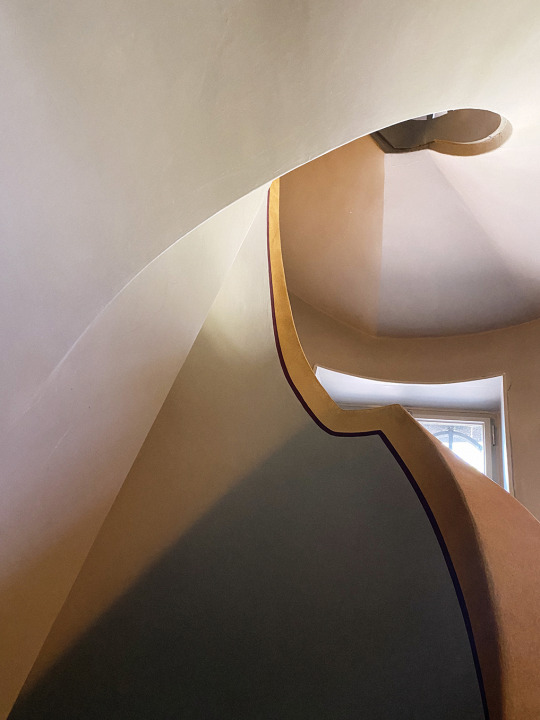
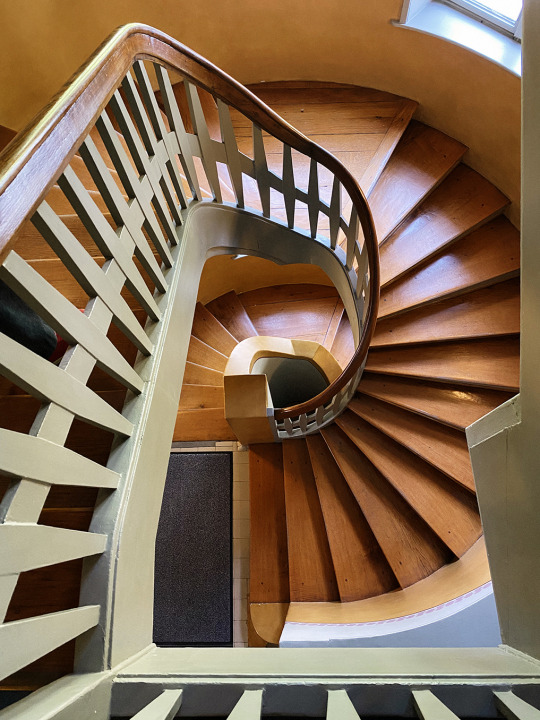
Hohenhof – the stairs · Hagen · 2023
#jugendstil#art nouveau#hagen#architecture#Henry van de Velde#Karl Ernst Osthaus#ruhr#ruhrpott#germany
131 notes
·
View notes
Photo

Paul Cézanne at his Les Lauves studio in 1906. The studio where Cézanne worked till the end of his life, the Atelier des Lauves is steeped in the artist's personality. Photographed by Gertrude Osthaus, wife of the museum director Karl Ernst Osthaus.
Daily inspiration. Discover more photos at http://justforbooks.tumblr.com
74 notes
·
View notes
Photo
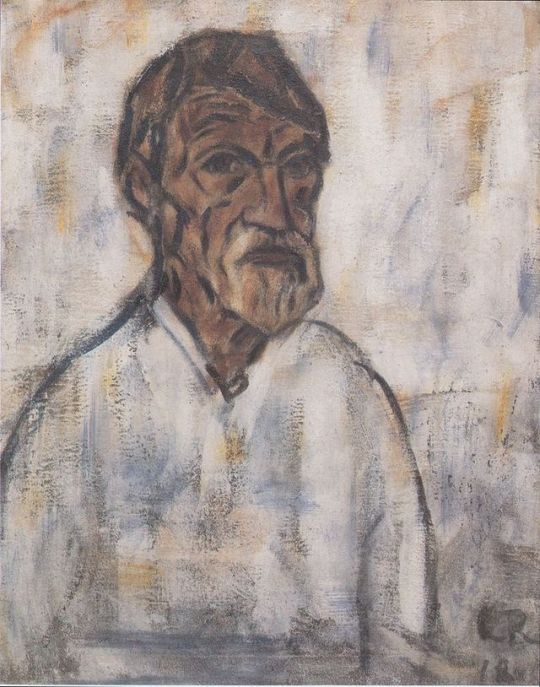
Christian Rohlfs - Self-portrait (1918)
Christian Rohlfs (November 22, 1849 – January 8, 1938) was a German painter, one of the important representatives of German expressionism.
He was born in Groß Niendorf, Kreis Segeberg in Prussia. He took up painting as a teenager while convalescing from an infection that was eventually to lead to the amputation of a leg in 1874. He began his formal artistic education in Berlin, before transferring, in 1870, to the Weimar Academy. Initially he painted large-scale landscapes, working through a variety of academic, naturalist, Impressionist, and Post-Impressionist styles. In 1901 left Weimar for Hagen, where the collector Karl Ernst Osthaus had offered him a studio in the modern art museum he was setting up there. Meetings with Edvard Munch and Emil Nolde and the experience of seeing the works of Vincent van Gogh inspired him to move towards the expressionist style, in which he would work for the rest of his career. In 1908, at the age of 60, he made his first prints after seeing an exhibition of works by the expressionist group Die Brücke. He went on to make 185 in total, almost all woodcuts or linocuts. He lived in Munich and the Tyrol in 1910–12, before returning to Hagen. In 1929 the town of Hagen opened a Christian Rohlfs Museum. In 1937 the Nazis expelled him from the Prussian Academy of Arts, condemned his work as degenerate, and removed his works from public collections. He died in Hagen, Westfalia, on January 8, 1938.
Degenerate art (German: Entartete Kunst) was a term adopted by the Nazi regime in Germany to describe Modern art. Such art was banned on the grounds that it was un-German, Jewish, or Communist in nature, and those identified as degenerate artists were subjected to sanctions. These included being dismissed from teaching positions, being forbidden to exhibit or to sell their art, and in some cases being forbidden to produce art. Degenerate Art also was the title of an exhibition, held by the Nazis in Munich in 1937, consisting of modernist artworks chaotically hung and accompanied by text labels deriding the art. Designed to inflame public opinion against modernism, the exhibition subsequently traveled to several other cities in Germany and Austria. While modern styles of art were prohibited, the Nazis promoted paintings and sculptures that were traditional in manner and that exalted the "blood and soil" values of racial purity, militarism, and obedience. Similar restrictions were placed upon music, which was expected to be tonal and free of any jazz influences; disapproved music was termed degenerate music. Films and plays were also censored.
45 notes
·
View notes
Text
INKE ARNS
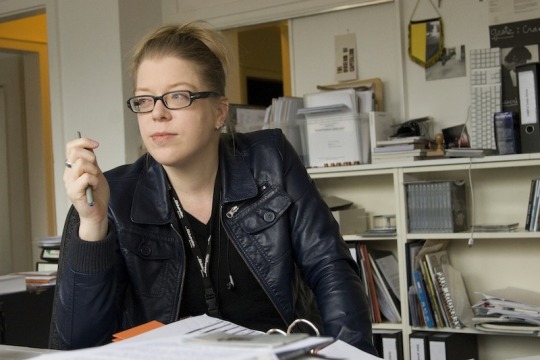
Mercredi 13 mars 2019
La Gaîté Lyrique
3bis Rue Papin, 75003 Paris (Métro Réaumur-Sébastopol et Arts-et-Métiers)
de 14h30 à 16h30
Co-commissaire - avec Marie Lechner - de l’exposition “Computer Grrrls. Histoire·es, genres, technologie·s” à la Gaîté Lyrique, Inke Arns est la directrice, depuis 2005, de Hartware MedienKunstVerein (HMKV) à Dortmund, après avoir travaillé à l’échelle internationale en tant que curatrice indépendante et théoricienne specialisée dans l’art des media, les cultures du net et l’Europe de l’Est depuis 1993. Inke Arns a vécu à Paris (1982-1986) avant d’étudier, à Berlin et Amsterdam (1988-96), la littérature russe, les cultures de l’Europe de l’Est, les sciences politiques et l’histoire de l’art. Elle a obtenu en 2004 un PhD de l’Université Humboldt à Berlin. Sa thèse portait sur le tournant paradigmatique produit par la façon dont les artistes réfléchissaient les avant-gardes historiques et la notion d’utopie, dans les projets d’arts visuels et d’art des media des années 1980 et 1990, en (ex)Yougoslavie et en Russie.
Parmi ses expositions : “History Will Repeat Itself“(2007), “Arctic Perspective“» (2010), “The Oil Show” (2011), “Sounds Like Silence (John Cage – 4’33’’ – Silence today / 1912 – 1952 – 2012)” (2012), “His Master’s Voice: On voice and language” (2013), “World of Matter “ (2014), “Jetzt helfe ich mir selbst – Die 100 besten Video-Tutorials aus dem Netz“ (2014), “Evil Clowns“ (2014), “Hito Steyerl: Factory of the Sun “ (2016), “Whistleblowers & Vigilantes“ (2016), “The World without us“ (2016), “Dan Perjovschi: The Hard/er Drawing “ (2016), “alien matter“ (transmediale, 2017), “The Brutalism Appreciation Society“ (2017), “Afro-Tech and the Future of Re-Invention “ (2017), “The Border “ (2017), “The Storming of the Winter Palace – Forensics of an Image“ (2017), “Computer Grrrls“ (2018) qui ouvre le 14 mars à la Gaîté Lyrique de Paris, et “The Alt-Right Complex“ (2019, à venir).
Les lieux où ces expositions se sont tenues sont: Bauhaus (Dessau), n.b.k. (Berlin), Moderna galerija (Ljubljana), Künstlerhaus Bethanien (Berlin), Karl Ernst Osthaus Museum (Hagen), Museum of Contemporary Art (Belgrade), Centre for Contemporary Arts – CCA (Glasgow), KW Institute for Contemporary Art (Berlin), Videotage (Hong Kong), Museum of Contemporary Art Vojvodina (Novi Sad), Centre for Contemporary Art Zamek Ujazdowski (Warsaw), Centre for Contemporary Art “Znaki Czasu” (Toruń), Contemporary Art Centre CAC (Vilnius), Muzeum Sztuki (Łodz), La Panacée (Montpellier), Jeu de Paume (Paris), Autocenter (Berlin), Moscow Museum of Modern Art (MMOMA) (Moscow), Kunsthal Charlottenborg, (Copenhagen), Haus der Kulturen der Welt (Berlin), Muzeum Sztuki (Lodz).
Autrice de nombreux articles sur l’art des medias et la culture du net, elle a mis en oeuvre de nombreux catalogues et ouvrages dont: “Neue Slowenische Kunst (NSK) – an analysis of ther artistic strategies in the context of the 1980s in Yugoslavia“ (2002); “Net Cultures“ (2002); “Objects in the mirror may be closer than they appear! The Avant-Garde in the Rear-View Mirror“ (2004, publié by Maska en Slovénie en 2006).
L’exposition “Computer Grrrls“ est dédiée à Nathalie Magnan (1956-2016).
[EN] Inke Arns, PhD, director of Hartware MedienKunstVerein (HMKV) in Dortmund. She has worked internationally as an independent curator and theorist specializing in media art, net cultures, and Eastern Europe since 1993. After living in Paris (1982-1986) she studied Russian literature, Eastern European studies, political science, and art history in Berlin and Amsterdam (1988–1996) and in 2004 obtained her PhD from the Humboldt University in Berlin with a thesis focusing on a paradigmatic shift in the way artists reflected the historical avant-garde and the notion of utopia in visual and media art projects of the 1980s and 1990s in (ex-)Yugoslavia and Russia. Since 2005 Inke is the (artistic) director of HMKV.
Arns ‘s exhobitions include “History Will Repeat Itself“ (2007), “Arctic Perspective“» (2010), “The Oil Show” (2011), “Sounds Like Silence (John Cage – 4’33’’ – Silence today / 1912 – 1952 – 2012)” (2012), “His Master’s Voice: On voice and language” (2013), “World of Matter “ (2014), “Jetzt helfe ich mir selbst – Die 100 besten Video-Tutorials aus dem Netz“ (2014), “Evil Clowns“ (2014), “Hito Steyerl: Factory of the Sun “ (2016), “Whistleblowers & Vigilantes“ (2016), “The World without us“ (2016), “Dan Perjovschi: The Hard/er Drawing “ (2016), “alien matter“ (transmediale, 2017), “The Brutalism Appreciation Society“ (2017), “Afro-Tech and the Future of Re-Invention “ (2017), “The Border “ (2017) “The Storming of the Winter Palace – Forensics of an Image“ (2017), “Computer Grrrls“ (2018), which is opening at La Gaîté Lyrique, in Paris, and The Alt-Right Complex (2019, upcoming).
Arns curated exhibitions a.o. at the Bauhaus (Dessau), n.b.k. (Berlin), Moderna galerija (Ljubljana), Künstlerhaus Bethanien (Berlin), Karl Ernst Osthaus Museum (Hagen), Museum of Contemporary Art (Belgrade), Centre for Contemporary Arts – CCA (Glasgow), KW Institute for Contemporary Art (Berlin), Videotage (Hong Kong), Museum of Contemporary Art Vojvodina (Novi Sad), Centre for Contemporary Art Zamek Ujazdowski (Warsaw), Centre for Contemporary Art “Znaki Czasu” (Toruń), Contemporary Art Centre CAC (Vilnius), Muzeum Sztuki (Łodz), La Panacée (Montpellier), Jeu de Paume (Paris), Autocenter (Berlin), Moscow Museum of Modern Art (MMOMA) (Moscow), Kunsthal Charlottenborg, (Copenhagen), Haus der Kulturen der Welt (Berlin), and Muzeum Sztuki (Lodz).
Author of numerous articles on media art and net culture, and editor of exhibition catalogues. Books include “Neue Slowenische Kunst (NSK) – an analysis of ther artistic strategies in the context of the 1980s in Yugoslavia“ (2002), “Net Cultures“ (2002), “Objects in the mirror may be closer than they appear! The Avant-Garde in the Rear-View Mirror“ (2004, published by Maska in Slovenian in 2006).
The exhibition “Computer Grrrls, Histor·y·ies, genders, technologies“, which she co-curates with Marie Lechner for the Gaîté Lyrique is dedicated to Nathalie Magnan (1956-2016).
Programmation et prochains rendez-vous sur ce site ou par abonnement à la newsletter : [email protected]
Pour regarder les séminaires antérieurs : http://www.vimeo.com/sysk/
Séminaire conçu et organisé par Patricia Falguières, Elisabeth Lebovici et Natasa Petresin-Bachelez et soutenu par la Fundación Almine y Bernard Ruiz-Picasso para el Arte.
0 notes
